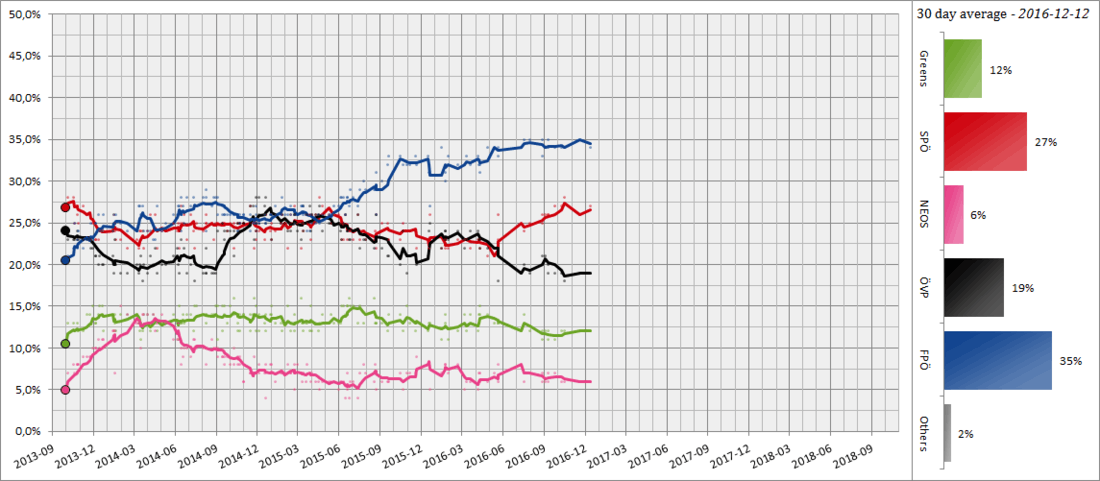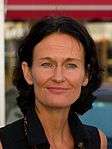Next Austrian legislative election
| | |||||||||||||||||||||||||||||||||||||||||||||||||||||||||||
| |||||||||||||||||||||||||||||||||||||||||||||||||||||||||||
| |||||||||||||||||||||||||||||||||||||||||||||||||||||||||||
| |||||||||||||||||||||||||||||||||||||||||||||||||||||||||||
The next Austrian legislative elections will be held in or before 2018. The leader of the strongest party in a formed coalition (if there is any) usually becomes Chancellor.
Electoral system
The 183 members of the National Council are elected by closed list proportional representation in nine multi-member constituencies based on the states (with varying in size from 7 to 36 seats)[1] and 39 sub-constituencies. Seats are allocated using the Hare method at the sub-constituency level and the D'Hondt at the federal level, with an electoral threshold of 4% or one seat in one of the 39 sub-constituencies.
Background
On 21 September 2016, comedian Roland Düringer announced he had founded a protest party called My Vote Counts (Meine Stimme gilt). At the announcement, Düringer was accompanied by Walter Naderer, a member of the Lower Austrian Landtag who had formerly been a member of Team Stronach before falling out with his colleagues. Analysts expected Düringer not to make it into parliament, but to most likely hurt the FPÖ's vote share.[2]
Opinion polls

References
External links
- Social Democratic Party of Austria
- Austrian People's Party
- Freedom Party of Austria
- The Greens – The Green Alternative
- Team Stronach
- NEOS – The New Austria
.jpg)




